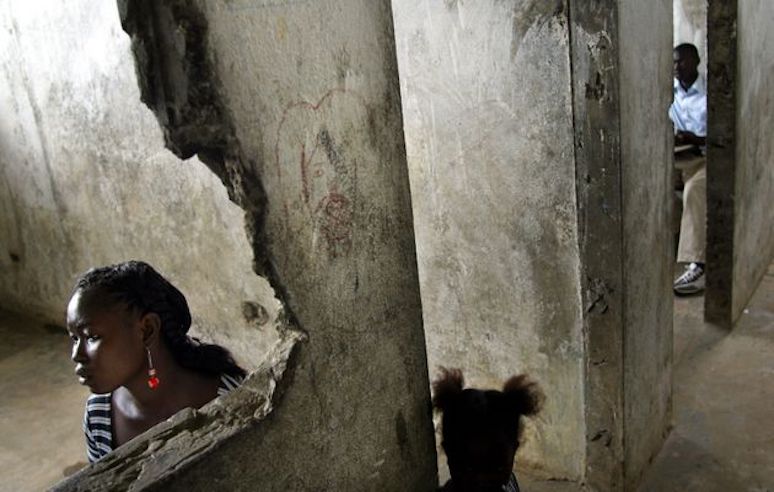Man, it’s crazy how many women lose their lives on a daily basis from unsafe abortions done by untrained and unskilled people using unsterile instruments. In Liberia, it is “illegal” to perform an abortion without “justifiable” reasons such as, rape, incest or a medical reason that could pose harm to the mother’s life. “Justifiable” we say, but what does it really mean? Does it mean that the very few conditions listed above are the only “justifiable” reasons for abortion? Do you think so?
According to UN Women, Liberia has one of the highest maternal mortality rates in the world with 1,072 maternal deaths for every 100,000 births. Despite this fact, people in Liberia generally have a negative reaction to abortion for various reasons; however, we think primarily the negative reaction to abortion in our society is out of ignorance and lack of understanding of what abortion is and the implications when we stigmatize the act, use it as a political statement or make it about our religious beliefs. Abortion is “the termination of pregnancy before fetal viability.” Viability here simply means an age at which a fetus is said to be capable of independent existence, i.e having a chance of survival outside of the mother’s body. It is very important to keep in mind that the age or what doctors would refer to as the gestational age for fetal viability varies depending on which part of the world you find yourself. The definition of “fetal viability” in the developed world is as you can imagine not the same as in low and middle income countries like Liberia. The World Health Organization (WHO) defines “viability” as 22 completed weeks from the first day of the last menstrual period. This means that if the pregnancy reaches 22 completed weeks then it has a good chance of surviving if delivered, depending on the level of neonatal intensive care unit available. Sadly, in most developing countries, especially in the West African Sub-region we do not have the level of care required to keep a 22 week old fetus alive outside of the mother’s body. Therefore in the Sub-region, “abortion” is the termination of pregnancy before 28 completed weeks. There are two types of abortion, spontaneous abortion and induced abortion. Spontaneous abortion is what we refer to as miscarriages. Actually some literatures says that nearly 40 percent of all conceptions ends up in an abortion sometimes without even the carrier of said conceptus knowing.
That was definitely not a simpler definition lol… However, the message we are trying to convey here is that in a place like Liberia, our health authorities probably need to determine the age of fetal viability. Taking into account our current state of healthcare delivery in Liberia, specifically in terms of neonatal intensive care units (specialized areas for the care of babies born earlier than the term of the pregnancy).
In my experience as a house officer (Dr. Hessou), working in the Department of Obstetrics and Gynecology, at the John F. Kennedy Medical Center -the largest medical/ referral facility in the Liberia, one of the leading causes of maternal mortality between March and April 2019 was “unsafe abortion” and complications arising from such. I’ve had several talks with other senior doctors who have worked at JFK for years and they’ve expressed similar experiences.
Although no formal study has been done at JFK (atleast not that we know of) to document the leading cause of maternal mortality, what we do know is that unsafe abortions and its complications contribute significantly to the number of lives that are lost at the hospital. Studies done in Ghana, Nigeria and other West African countries have put unsafe abortions as the 3rd leading cause of maternal deaths from direct obstetric causes, with the first and second being hemorrhage and hypertensive disorders respectively. Unsafe abortions account for approximately 13% of maternal mortality globally and more regional studies have found a similar trend. Of course, there are many factors that contribute to maternal mortality, and reduction requires multiple approaches. This approach encompasses tackling several factors that contribute to the high maternal mortality we see in developing countries like illiteracy, ignorance, poverty, malnutrition, socio demographic and other cultural factors like unhealthy customs, beliefs and social taboos that most often leave women feeling powerless and afraid to even seek the help they need. All of these insurmountable obstacles are then made worse by poor health care delivery systems, poorly staffed, equipped and maintained hospitals. The point here is that there are well documented literature out there clearly outlining various strategies for reducing maternal mortality especially in developing countries and they are laid out very nicely into what needs to be done for:
- All women (education, economic empowerment, adequate nutrition, easy access to contraceptives to prevent unwanted pregnancies);
- All pregnant women (access to healthcare facilities with trained staff capable of rendering antenatal care, basic emergency obstetric care and comprehensive emergency care; and
- Women not wanting children, including:
- those that are pregnant (SAFE ABORTION CARE) and
- Non pregnant (Family planning services).
Authored by Dr. Heounohu R. Hessou, Atty. Joshua S. Kulah & Dr. Richard J. Doe
(Despite 3 authors, this piece is written in one voice)
Featured Picture by Huff Post

